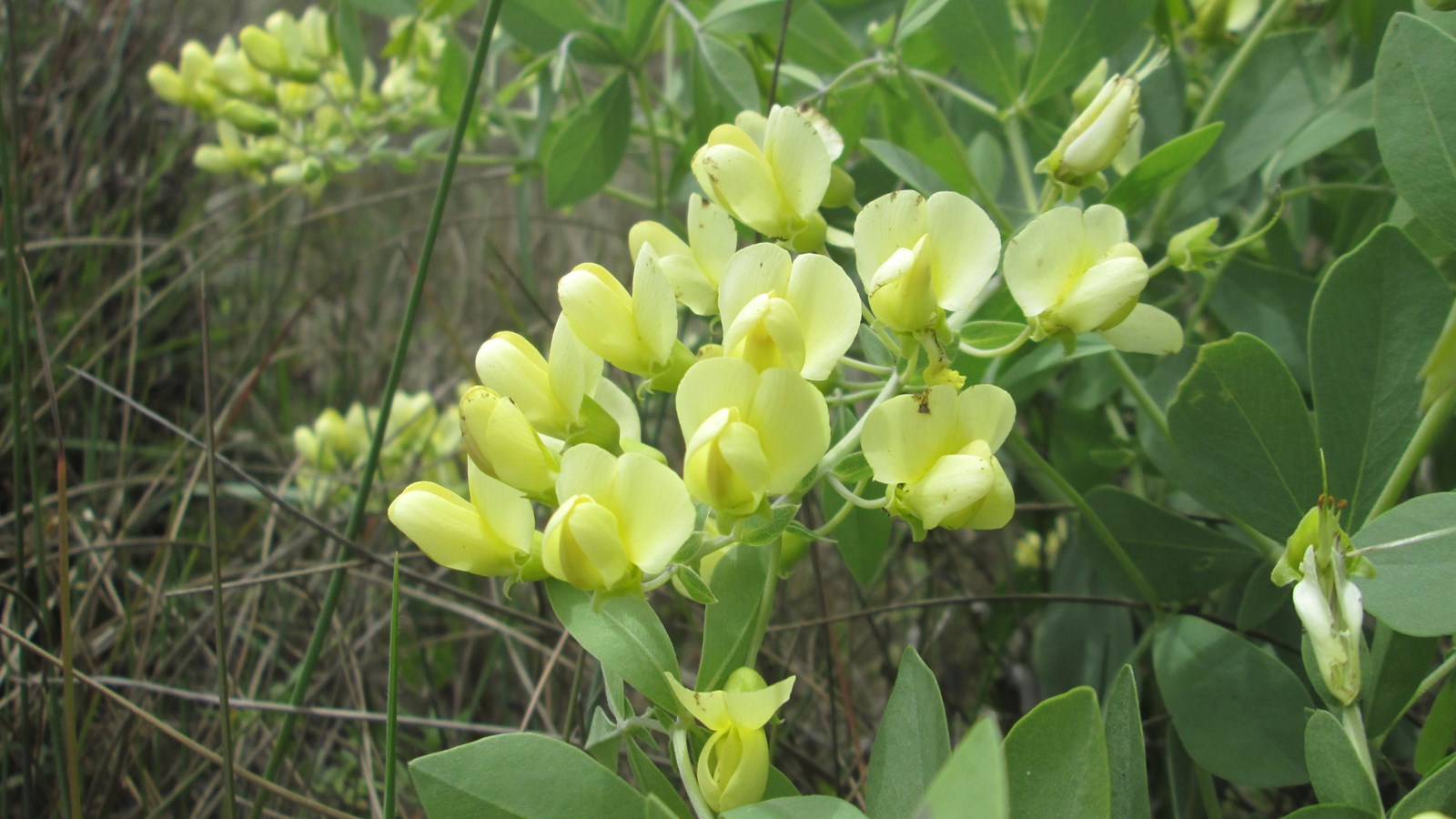Last updated: March 10, 2024
Place
Stop 10: Plains Wild Indigo (Baptisia bracteata var. leucophaea)

Scenic View/Photo Spot, Wheelchair Accessible
Common Name: Plains Wild Indigo
Scientific Name: Baptisia bracteate var. leucophaea
Family Name: Fabaceae
Duration: Perennial
Size: Up to about 2 feet tall
Leaf Arrangement: Alternate
Blooming Months: Spring, Summer
Distribution: AR, IA, IL, IN, KS, LA, MA, MI, MN, MO, MS, NE, NJ, OK, SD, TN, TX, WI
General Description
Plains wild indigo, Baptisia bracteata var. leucophaea, is a plant that belongs to the pea family. The scientific name of this species gives an indication to its physical characteristics as well as its uses. Baptisia means “to dye,” and some species within this genus have been used to make dyes. Bracteata refers to the bracts that the plant bears, and leucophaea describes the off-white coloring of the flowers. The flower stalks can reach upwards of one foot long, and the large flower clusters droop and hang to the ground due to the weight of the inflorescence. In late summer, the entire upper portion of the plant loses its green color. It becomes dry, turns dark grey to black, and breaks off to become tumbleweeds. This process aids the plant in seed dispersal.
Park Wildlife Ecology/Connections
This member of the legume family has been cited as having special value to native bees of the region, especially bumblebees. The shape of the indigo flowers is unique and makes accessing nectar slightly difficult. The size and strength of bumblebees, when compared to other types of pollinators, is well adapted to propel them towards the nectar deeper in the flower. The specific timing of the flowers’ nectar and pollen development on the plant also aids in proper pollination.
North American Ethnobotany
The Pawnee people used the plant as a gastrointestinal aid and would crush the seeds of the plant. They would then combine them with buffalo fat to be applied to the abdomen for colic. During the Civil War, plains wild indigo was used medicinally by Confederate surgeons as an emetic (causes vomiting) and as a cathartic (causes purging). The Army of Virginia (US) would frequently attach the fresh plants to their horses to act as an insect repellant.
